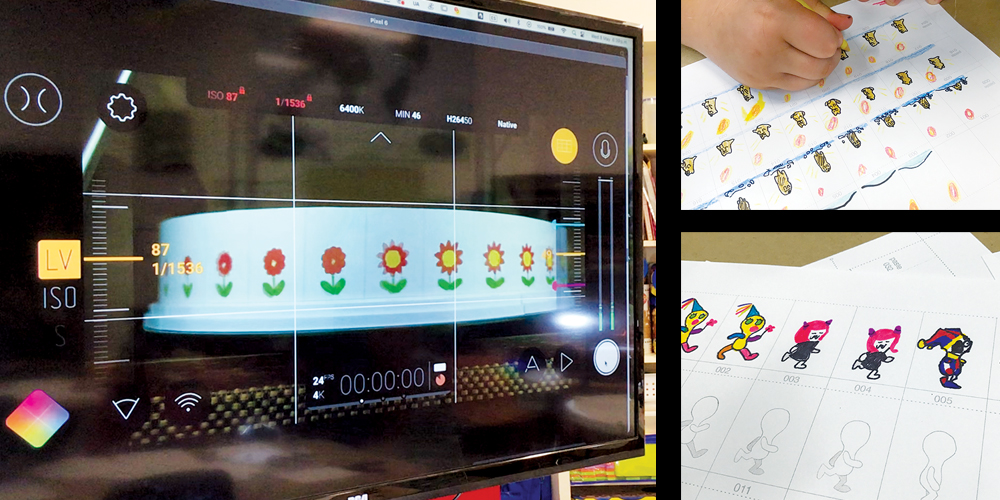
Phonotrope /
The Phonotrope works on a similar principle to the phenakistiscope, the zoetrope, and the praxinoscope, which relied on mirrors or slits to help the eye perceive a sequence of images printed/drawn onto a pre-established grid or set of frames as an animated loop.
[ ... ]
The phonotrope uses a rotating turntable as a source of movement and replaces the vertical slits or mirrors with the use of strobbing lights or a video camera equipped with a capturing speed adjustment that allows to change the frame rates to make the phonographic animation visible.
The turntable's movement was often used to expand the vinyl records' experience.
The "Baby Talkie," commercialized in Japan in the 1930s, consisted of a zoetrope-like device whose stem was mounted on the spindle of the record player. In the 1950s, The Red Raven Magic Mirror used the principles of the praxinoscope to allow children to listen to a record and enjoy an animated image printed at the center of the records.
Contemporary artists and animators use the same principles for the creation of astonishing works as demonstrated by the exhibition TURN ON: Tales and Mechanical Animations presented at the Rotondes: Exploration culturelles (Luxembourg) at the beginning of 2024. To those who still remember playing vinyl records on a turntable, the phonotrope is tinted with an aura of nostalgia; at the same time, it introduces digital natives to the materiality of sound recording apparatuses.
 About the Artist: Professor Aldo Murillo is an Assistant Professor at the prestigious Tecnológico de Monterrey, Querétaro, México (Education Program Coordinator). He specialized in UX Design (product design and research), Motion Graphics Design (physics, patterns, and visual design), Animation, and Visual Effects.
About the Artist: Professor Aldo Murillo is an Assistant Professor at the prestigious Tecnológico de Monterrey, Querétaro, México (Education Program Coordinator). He specialized in UX Design (product design and research), Motion Graphics Design (physics, patterns, and visual design), Animation, and Visual Effects.
This program was supported by the Ryla T. ∧ John F. Lott Endowment for Excellence in the Visual Arts, administered through the TTU School of Art, and the Art History Area, School of Art, TTU.
